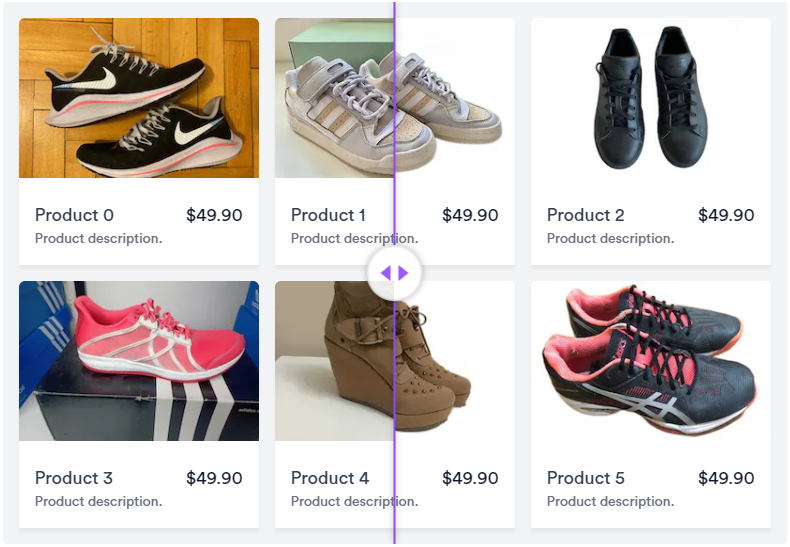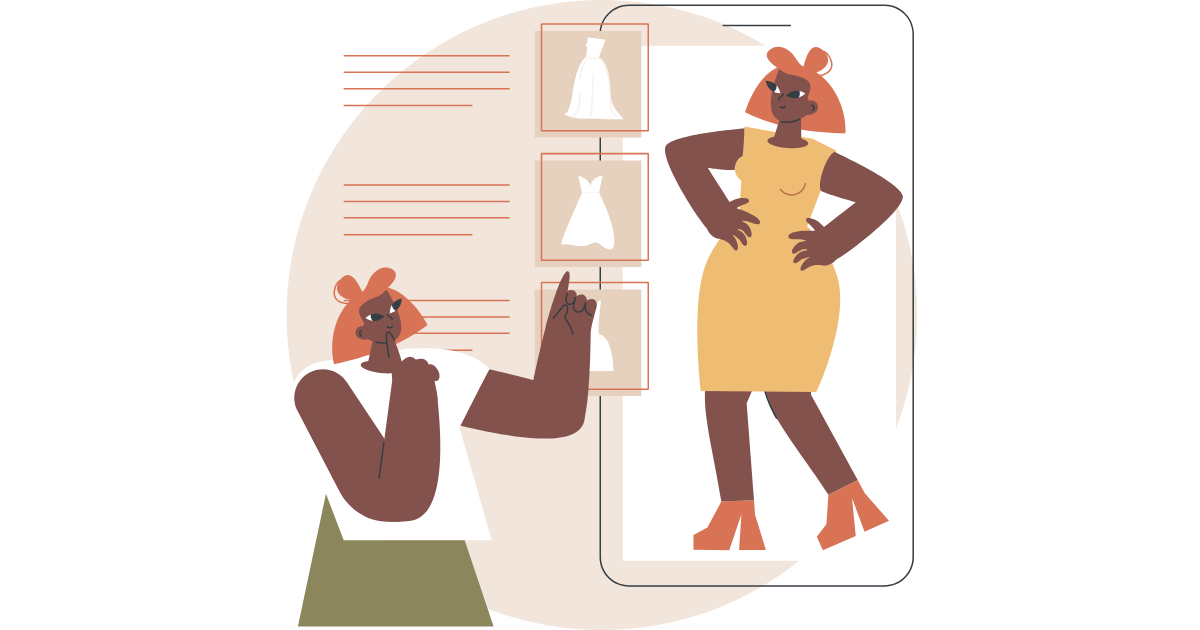Computer Vision in e-commerce: 5 ways it is transforming online shopping
Improved product discoverability, inventory management, and visual try-on are just a few ways computer vision is changing the e-commerce game.


Pablo Soto, Leonardo Piñeyro

Computer vision is a rapidly growing field transforming how businesses interact with technology. In recent years, advances in computer vision have enabled the development of new applications in a wide range of industries. This is the case with e-commerce.
In this blog post, we will explore how computer vision is being used to improve e-commerce and online marketplaces, including product search, content moderation, inventory management, and more.
By leveraging the power of computer vision, these applications can help to improve the accuracy, efficiency, and user experience of e-commerce marketplaces, making them more scalable, profitable, and successful.
1. Improved Search
Computer vision is a key technology that can improve the accuracy and efficiency of product searches on an e-commerce platform. In particular, computer vision algorithms can be used to automatically analyze product images and extract relevant visual features, such as color, shape, and texture.
These features can then be used as indices for the products on the marketplace, allowing for more accurate and relevant search results.
To implement this functionality, an e-commerce store must train a computer vision model on a large dataset of labeled product images. The model would be trained to recognize and extract the relevant visual features.
This training process typically involves using a supervised learning algorithm, where the model is provided with labeled examples of product images and the corresponding visual features that should be extracted.
Once the model has been trained, it can be applied to new, unseen product images to extract the relevant visual features. This can be done by feeding the product images into the model and processing the output to generate a set of visual features for each product.
These visual features can then be used to index and categorize the products on the marketplace, allowing for more accurate, relevant search results and maximizing user engagement and conversions.
2. E-commerce content moderation through computer vision
Content moderation is the process of reviewing and filtering user-generated content on an e-commerce platform to ensure that it is appropriate and complies with the platform's policies. This is a crucial task for e-commerce operators, as inappropriate or spammy content can harm both buyers and sellers and damage the marketplace's reputation.
Computer vision can be used to automatically detect any sensitive or personal information in user-generated content, such as phone numbers or email addresses. This can help protect users' privacy and prevent the misuse of their personal information.
Furthermore, computer vision can also be used to improve the overall efficiency of content moderation on a marketplace platform. By automatically analyzing and flagging potentially inappropriate content, computer vision algorithms can help reduce human moderators' workload and allow them to focus on the most difficult or complex cases.
3. Inventory management

Another way to implement computer vision in e-commerce is through Inventory management. It is the process of tracking and managing the stock of products on an e-commerce platform. Accurate and efficient inventory management is crucial for the success of a marketplace, as it ensures that products are available when users want to purchase them and prevents overstocking or stockouts.
Computer vision algorithms can be used to automatically analyze product images and extract information that is relevant for inventory management. For example, computer vision algorithms can be trained to recognize and classify products based on their size, shape, and color, allowing for more accurate inventory tracking.
Additionally, computer vision can be used to automatically identify any defects or damage in products, allowing for efficient and timely removal of these products from the inventory.
4. E-commerce Image retouching

Image retouching is a process that involves enhancing the appearance of an image to make it more visually appealing. In the world of online commerce, image retouching can be a valuable tool for improving the user experience and increasing conversions. Computer vision is a key technology that enables this process.
Computer vision algorithms are used in image retouching to automatically analyze and interpret an image's content. These algorithms can be trained to recognize specific features in an image, such as blemishes, wrinkles, or other imperfections. Once these features have been identified, computer vision algorithms can be used to automatically apply retouching techniques to the image to improve its appearance.
Additionally, computer vision is used in image retouching to improve the consistency and standardization of product images across a marketplace platform. An e-commerce marketplace can create a cohesive and professional-looking visual brand by applying the same retouching techniques to all product images. Computer vision algorithms can be used to automatically detect and correct any inconsistencies in the retouching process, ensuring that all product images are retouched to the same high standards.
5. Virtual try on

One of the most flashy applications of computer vision in e-commerce is Virtual try-on. It is a technology that allows users to try on virtual versions of clothing and accessories to see how they would look. In the world of online stores and marketplaces, virtual try-on can be a valuable tool for increasing conversions and improving the user experience. And computer vision plays a key role in enabling this technology.
Computer vision is used in virtual try-on technology in several ways. First, it analyzes images of the user's body to create a virtual 3D model. This model accurately simulates the appearance of clothing and accessories on the user's body. Computer vision algorithms also track the user's movements and update the virtual try-on experience in real-time.
Additionally, computer vision is used to enhance the quality of the virtual try-on experience. For example, computer vision algorithms can remove noise or other imperfections from the input images and improve the lighting and contrast in the virtual try-on environment. This can make the virtual try-on experience more realistic and enjoyable for users.
Conclusion
In conclusion, computer vision is a valuable technology for e-commerce and online marketplaces. It can improve the accuracy, efficiency, and user experience of various tasks, including product search, content moderation, inventory management, and more.
If you are interested in developing custom computer vision solutions for your e-commerce or marketplace, our team of experts can help. Contact us to learn more about how we can help you improve your e-commerce and online marketplace operations.